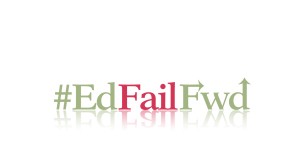 After a four year hiatus, I am teaching second grade again. The school year is wrapping up, and I can’t help but compare this school year to when I taught second grade four years ago. Four years. That doesn’t sound so long, unless you think about the technology from four years ago. If I wanted to share pictures in 2009, I had to connect my camera to my computer, wait 10 minutes, upload them, connect my laptop to the LCD projector, and show them to my students. There was no AirPlay. There was no iPad. Four years later, the possibilities for innovation in second grade are endless.
After a four year hiatus, I am teaching second grade again. The school year is wrapping up, and I can’t help but compare this school year to when I taught second grade four years ago. Four years. That doesn’t sound so long, unless you think about the technology from four years ago. If I wanted to share pictures in 2009, I had to connect my camera to my computer, wait 10 minutes, upload them, connect my laptop to the LCD projector, and show them to my students. There was no AirPlay. There was no iPad. Four years later, the possibilities for innovation in second grade are endless.
I started this school year with conservative projects: successful, easy to complete, safe. That was a problem for me–safety does not equal innovation, and I am only satisfied as a teacher when I am working towards creating a more innovative classroom.
We need to be taking more risks in the classroom if we want innovative ideas to be transformative. Inherent with risks are failures, but so are amazing successes. And I want my second graders to experience amazing successes. So, I started taking more risks with my lessons. We wrote a song about Class Dojo in GarageBand, and then decided to shoot a music video using only an iPad. I had never shot original footage with elementary students, but the story they wrote required us to film (and not use footage from Discovery Education). So we filmed. And it was eduawesome!
Fueled with enthusiasm and confidence, we jumped into the next project–Minecraft in the classroom. My students love Minecraft, and I even found MinecraftEdu. Surely that would lead to success. I bought Minecraft on my two iPads and two laptops and wrote a lesson plan to teach subtraction in the world of Minecraft.
It. Did. Not. Work. At all. I learned pretty quickly that iPads and laptops can’t play together. Oops. Then, I learned that students like to crowd around iPad screens, even if I’m mirroring a screen on an HDTV. Oops. Then, I learned that students like to watch, but don’t like to solve subtraction problems on paper. Oops.
That’s three “oops”es, if you’re keeping score.
I learned that it was ok to say oops. The world did not end. I did not get reprimanded. (My principal even came in during that train wreck lesson and commented on the innovation of using iPads to teach math. Apparently it looked good!) I did not waste class time. It was all ok.
After a few not-so-good lessons, I figured out how to better leverage Minecraft during math lessons. We created arrays (4×3 grids, 2×6 grids, etc.) in both Minecraft and on paper. We solve problems together, and viewed them in two drastically different worlds. My students have a solid understanding of arrays now, even when it’s only pencil and paper.
I learned two big lessons.
First, if you walked into my classroom today and saw my students solving math problems in Minecraft, you’d be blown away. I must admit, it’s pretty stinkin cool. However, it did NOT start out impressive. Heck, even the middle part of the Minecraft Math project wasn’t very good. There were several really bad lessons where very little math happened. And I didn’t share that… until now. A problem with blogs is that educators tend to share only their very best ideas. We simply don’t share stumblings and failures.
If you’re just learning about a new project/workflow/tool/app, you probably won’t use it in your classroom. There is pressure as a teacher to be 100% successful. And that’s a huge problem if the goal is to be innovative.
The second thing I learned along the way is that modeling failure with students is important. Rushton Hurley talks about how you, the teacher, may be the only graceful example of failure your students will ever see. When something doesn’t work, what do you do? You can choose to get flustered or angry, or you can acknowledge it, and move forward. If you frame failures this way, it’s a win/win. Right? If a new idea doesn’t work, you’re modeling graceful failure and striving for epicness. If a new idea does work, then you’re stoked!
So for my part, I will take more risks in my classroom, striving to create a more innovative classroom. I’ll blog about lessons that almost worked, and share ideas that failed.
You can join me on the internets by using the new, freshly unboxed hashtag #edfailfwd. It even has an #edufancy logo, created by the illustrious Victoria Olson.
Let’s take some risks together in hopes of truly becoming innovative.
Note: Here is the logo in various formats. Feel free to use, share, and distribute.



